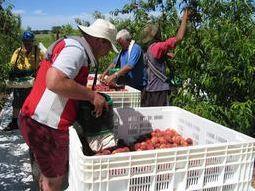
The soaring Australian dollar, difficult growing conditions and a strong domestic market are posing challenges to Australia’s stonefruit sector as it fights to re-establish itself in the Taiwanese market, after access was cut in early 2006.
On January 13 stonefruit peak body Summerfruit Australia will host an official launch in Taiwan to signal its arrival back in the market. The function, held in association with Austrade, will bring together importers and exporters from the two countries and is intended to help re-establish the market, which once took around a third of all Australian stonefruit.
Australian Summerfruit CEO John Moore, who has recently returned from the country, told Fruitnet.com the launch would be part of a wider push by the industry body to raise awareness of Australian stonefruit.
He said during his trip to Taiwan he attended an industry lunch with 22 importers from across the country and some Australian exporters, who shared favourable opinions about the potential of the market for Australian fruit.
Eason Ji from major Taiwanese importer Coverings International agreed there was a lot of interest in Australian stonefruit. “Peaches and nectarines are both popular in the Taiwan market if the quality is right, and Australian summer fruit can catch the Chinese New Year easier than Chilean fruit.”
He added that importers would be looking for good prices.
Australian industry stalwart David Minnis, however, pointed out that problems for Australian growers and exporters in relation to the high Australian dollar and a shortage of early-season fruit, meant exporters would be targeting premium prices for any produce sent to the country. “With the high dollar and the high cost of shipping we wont be able to offer any fruit cheaply.”
He added that it was important exporters start the season off on the right foot by supplying quality fruit to Taiwan. “There’s no point in exporting a failure,” he said.
Part of the challenge for Australian stonefruit will be to wrestle some of the market share back from Chile, which now has a substantial presence in the country. He pointed out total sales of stonefruit had decreased in the country since Australia’s exit. “Whether we can recoup some of the market that has been lost over that time remains to be seen,” he said.
Australia has one advantage over Chile in its proximity to Taiwan, he added. “It takes four weeks to ship fruit from Chile, so they pick it when it is not properly ripe, so this means it lacks sweetness and flavour.”



